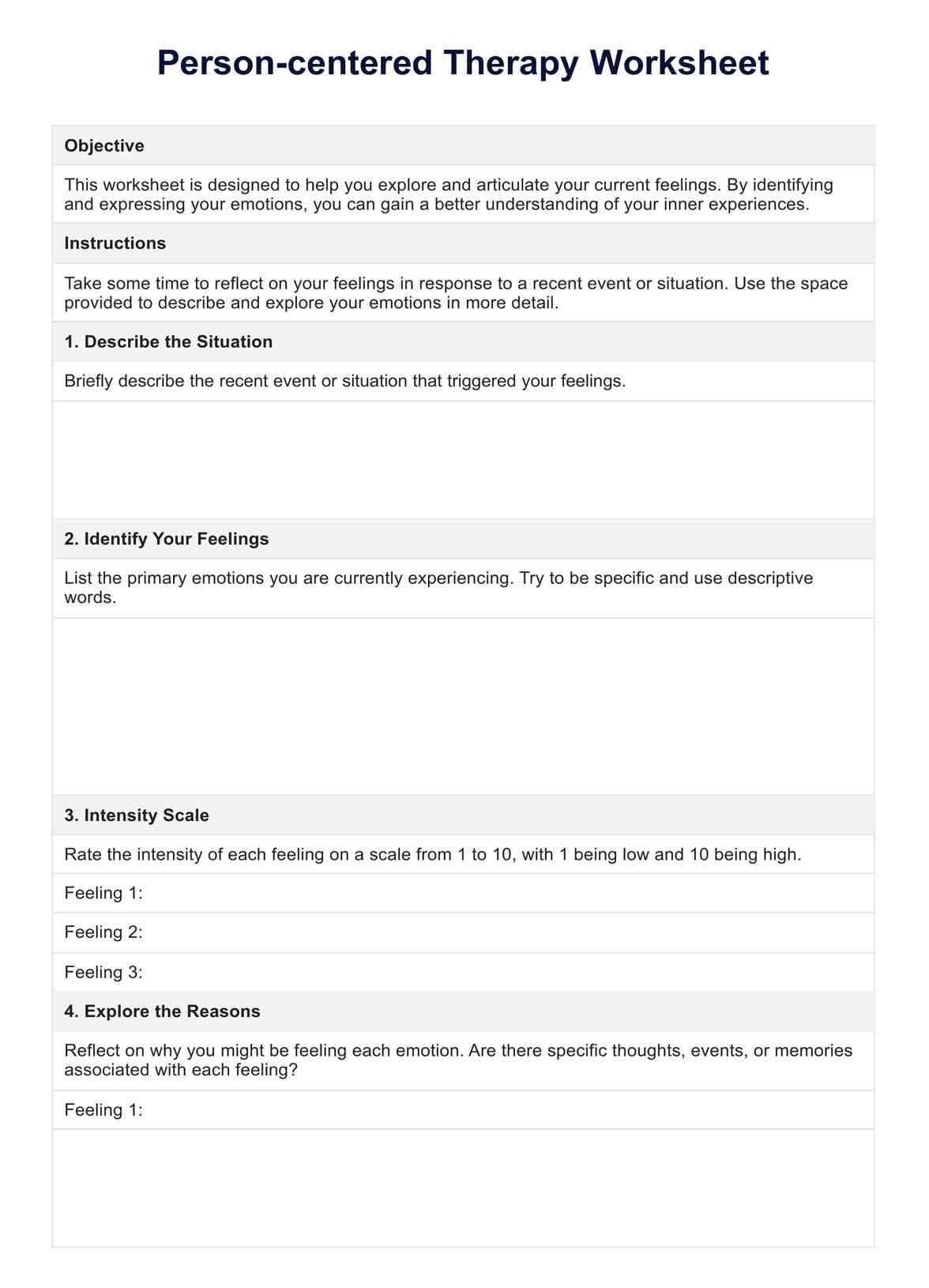The primary goal of person-centered therapy is to facilitate self-exploration, self-acceptance, and personal growth by creating a therapeutic environment characterized by empathy, unconditional positive regard, and genuine understanding.

Person-Centered Therapy Worksheets
Enhance self-awareness and personal growth with person-centered therapy worksheets.
Person-Centered Therapy Worksheets Template
Commonly asked questions
Person-centered therapy stands out for its non-directive approach, emphasizing the client's autonomy and self-discovery. Unlike other treatments, it does not involve specific techniques or interpretations imposed by the therapist, focusing instead on creating a supportive space for the client's exploration.
Person-centered therapy is often effective for a wide range of psychological issues, including anxiety, depression, and relationship challenges. However, its effectiveness may vary depending on individual preferences and the nature and severity of the problem. Sometimes, clients may benefit from a more directive or specialized approach.
EHR and practice management software
Get started for free
*No credit card required
Free
$0/usd
Unlimited clients
Telehealth
1GB of storage
Client portal text
Automated billing and online payments











